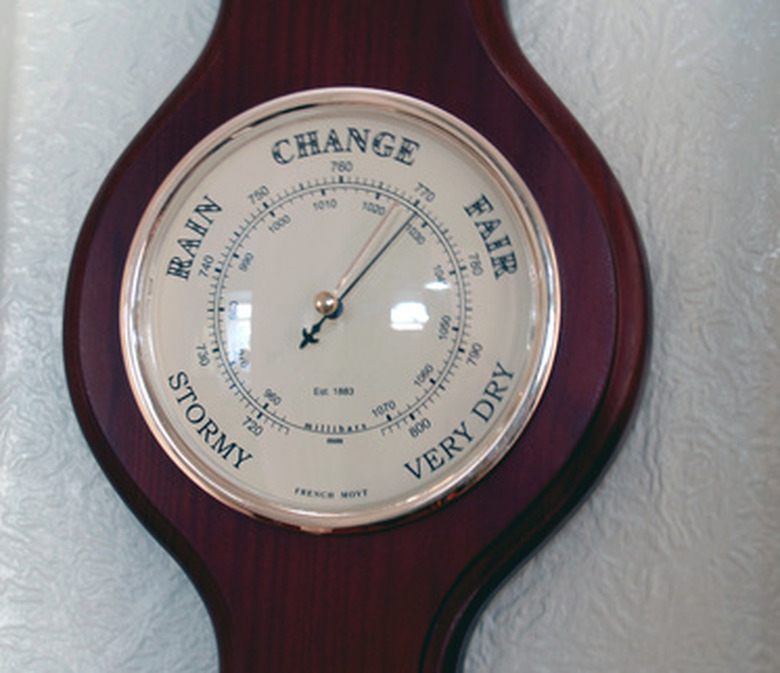Instruments Used For Measuring Air Pressure
A barometer is any instrument that measures air pressure. Barometers come in two basic forms: the aneroid barometer and the mercury barometer. Aneroid barometers use cells that expand and contract as air pressure changes. Air pressure is measured by attaching a needle into these cells. A mercury barometer, on the other hand, uses mercury that rises and falls in response to air pressure changes.
Barograph
Barograph
The barograph is one type of aneroid barometer. The device has a small, flexible metal capsule known as the aneroid cell. The construction of this instrument creates a vacuum so that small changes in air pressure can cause the contraction or expansion of the cell. Calibration of the aneroid cell is then performed and the volume changes are transmitted by levers and springs to an arm that moves accordingly. Barographs have a pointer located on the side of a cylinder that rotates along with the graphic paper. The pointer traces on the paper as the cylinder rotates. These tracings indicate the increase and the decrease in pressure.
Simple Clock-like Barometer
Simple Clock-like Barometer
The simple clock-like barometer is another type of aneroid barometer. It functions in the same manner as the barograph, except it uses a pointer that moves from left to right in a semicircular motion over a dial to indicate low and high pressures.
Mercury Barometer
Mercury Barometer
A mercury barometer has a long glass tube filled with mercury turned upside down in a bowl of mercury known as the cistern. As the mercury runs out of the tube and goes into the cistern it creates a vacuum at the top of the tube. Naturally, vacuum exerts very little or no pressure on their surrounding environment. Air pressure is responsible for keeping the column of mercury up. As air pressure pushes down the mercury into the cistern, the mercury in return pushes up with the same amount of pressure on the mercury inside the glass tube. The height of the mercury inside the tube is indicative of the total pressure exerted by the environment.
Cite This Article
MLA
Gunderson, Michael. "Instruments Used For Measuring Air Pressure" sciencing.com, https://www.sciencing.com/instruments-used-measuring-air-pressure-7158667/. 24 April 2017.
APA
Gunderson, Michael. (2017, April 24). Instruments Used For Measuring Air Pressure. sciencing.com. Retrieved from https://www.sciencing.com/instruments-used-measuring-air-pressure-7158667/
Chicago
Gunderson, Michael. Instruments Used For Measuring Air Pressure last modified March 24, 2022. https://www.sciencing.com/instruments-used-measuring-air-pressure-7158667/
